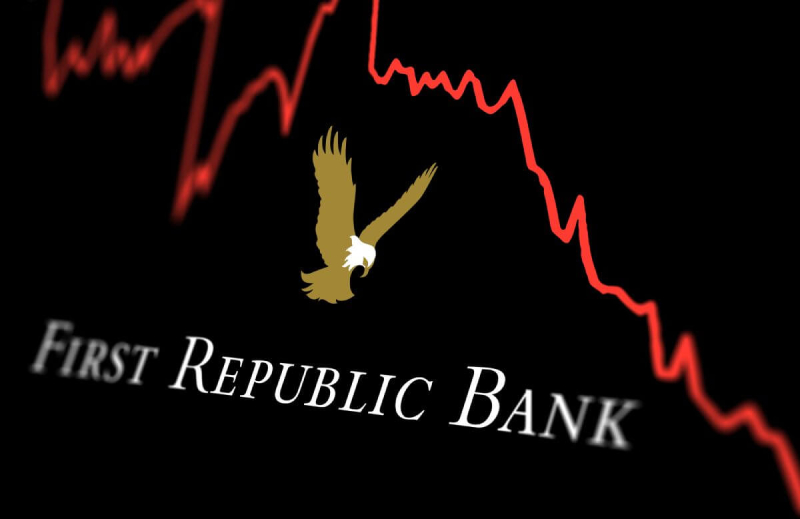Now, I know that I recently started talking about the new FinCEN reporting requirement and promised a part two… which I’ll absolutely get to in an upcoming blog.
But this time I wanted to take the opportunity to speak about the banking “crisis” that has a lot of Dallas Fort Worth business owners frantically deciding how (and if) they need to respond.
You and I can see that the US economy seems to be built on quicksand right now.
Things are shifting faster than some of us can keep up with as we watch banks sink and businesses go right along with them.
Don’t panic – even as you’re wondering what you should do right now to keep your business stable and moving forward. That conversation certainly goes beyond one weekly strategy note, but I wanted to step into the fray today to give some perspective.
There are a lot of things you can examine in your business to spot financial drains and capitalize on profit-bringing endeavors. That’s something we should talk about sooner rather than later.
Book a time to have that conversation now:
calendly.com/32analytics-myohannes/32-analytics-partnership
Until then, let’s take a deeper look at what’s happening in our economy (bank failures and all) and see what that means for you and your Dallas Fort Worth business.
How the Bank Crisis Affects Dallas Fort Worth Business Owners
“The fundamental business of the country … is on a very sound basis.” – Herbert Hoover
Silicon Valley… Signature… First Republic… Three rapid bank failures have just flooded the business world — an environment that hasn’t seen such things in a while.
It’s worth asking right now: What are bank failures the end of? Or more importantly: What are bank failures the start of?
Bank busts have been more common throughout American history than we usually remember. This week, I want to address our potential crisis by giving an overview of past problems and some of their causes — and what other small businesses are thinking about how to respond.
We’ll analyze some of those response strategies next time.
History repeats itself
Just as in our times, bank sinkings have always cropped up as signs of wider, spreading economic distress — such as the global changes (the end of the Napoleonic Wars) just before the panic and widespread bank crashes of 1819. Not 20 years later, the country saw a recession that lasted into the 1840s sparked in part by a land-price bubble. (Historically, market “bubbles” have often contributed to economic and banking problems.)
Interlaced finances in our modern world are nothing new, either: In 1819, one of our country’s first federal banks had to cut credit to state-chartered banks, leading to the collapse of many of them amid depositors’ runs.
In 1873, speculation in railroad bonds (combined with the demonetizing of silver, inflation, and high-interest rates) ignited bank failures in the country’s first great depression. In 1907, major losses by two copper speculators rippled out to become runs and insolvency on associated banks. Loans to the banks stemmed the runs, but the crisis soon intensified into runs on many New York-based financial institutions.
This copper mess of more than a century ago has connections with today’s problems. Steps taken to solve it gave birth to some of the tools and philosophies used by the Federal Reserve today, and observers note how some of those New York companies resemble today’s shadow banks.
The Great Depression and afterward
On “Black Tuesday” (October 29, 1929), the greed and guesswork that had inflamed Wall Street through the “Roaring Twenties” joined rising unemployment and shady financial reporting to bring about the true Great Depression. Bank runs and failures spread over the next few years until President Franklin Roosevelt ordered a “holiday” in which all banks had to cease operations until they could show solvency.
Thousands of banks that had extended too much credit and ignored the Federal Reserve’s warnings went under through the 1930s — and the process birthed the Federal Deposit Insurance Corporation (FDIC), which guaranteed that depositors would not lose their deposits in member banks in the event of a failure.
More recently, the Savings and Loan crisis began right after the rampant inflation of the 1970s and intensified regulation; more than 1,000 S&Ls failed through the 1980s. In 2008, the Great Recession began when two investment banks — Bear Stearns and Lehman Brothers — became insolvent. Rampant speculation in housing markets contributed to the crisis.
From it, however, came regulatory reforms that included the Dodd-Frank Wall Street Reform and Consumer Protection Act that helped ensure that banks “too big to fail” were capitalized to handle the next crisis. (Those regs have since been scaled back.) From 2008 through 2015, more than 500 banks failed from this crisis, but the only runs were on “shadow banks” that lacked government backup.
What’s happened now?
Silicon Valley Bank invested heavily in Treasury bonds, the value of which was hammered by the Fed’s hikes in interest rates to fight inflation. A run soon fed on itself as the bank was forced to sell more and more Treasuries at a loss. SVB was the largest bank failure since 2008 and the second-largest bank failure in American history, behind Washington Mutual during the Great Recession.
Signature Bank was in a similar situation to SVB. It also failed and was the third-largest U.S. bank failure ever. On May 1, First Republic Bank folded (taking SVB’s spot as the second-largest American bank failure).
What mood are small businesses in as crisis ripples through the economy and lending sources tighten?
A recent survey of accountants who represent more than 100,000 small businesses revealed worry about the challenges ahead of getting capital, among other concerns. The economy’s expected to get worse for small businesses over the next 12 to 18 months, most respondents said… and even more specified that small businesses’ ability to access fresh capital would worsen – not to mention the unknown risks of shadow banks and other new varieties of lenders.
“Line up any capital or loans needed ASAP,” one respondent advised.
There are ways to do that — and to keep your business banking on track. We’ll look at some of your options for that next time. In the meantime, let me know if there’s anything specific you’d like to chat about concerning your business.
Looking out for you,
Mebea Yohannes

